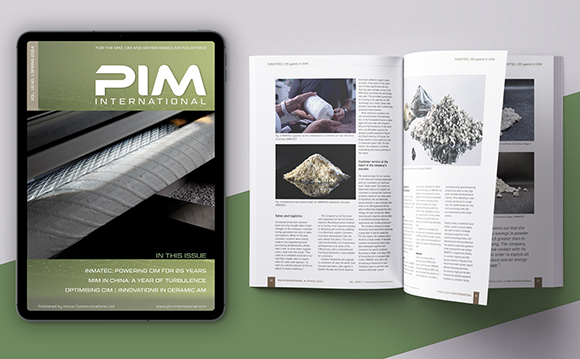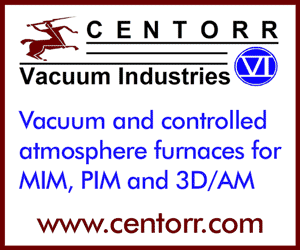REACH regulation puts pressure on European producers
July 26, 2009
The European Union regulation REACH, which stands for ‘Registration, Evaluation and Authorisation of Chemicals’ came into force in June 2007 (see September 2007 issue of PIM International, pp43-51). The regulation includes metals, alloys and other raw materials, and obliges European producers to register the manufacture and use of ‘substances’ used in component manufacture.
Dr Olivier Coube, Technical Director of the European Powder Metallurgy Association (EPMA) told delegates at the association’s General Assembly held in Kochel-am-See earlier this year that the six month pre-registration period for REACH closed on December 1, 2008.
He reported that around 143,000 Pre-registered Substances were submitted by some 65,000 EU/EEA-based companies between 1 June and 1 December 2008. A list of theses substances has been published on the ECHA (European Chemicals Agency) website www.echa.europa.eu
‘Companies which have pre-registered their substances will benefit from the staggered registration deadlines (2010, 2013 or 2018) for their substances’, said Dr Coube. ‘Their next REACH obligation will be to start data sharing in Substance Information Exchange Forums (SIEFs) after the EU/ECHA has published the ‘List of Pre-registered Substances’’.
He warned that companies which have failed to meet the pre-registration deadline cannot continue manufacturing or importing the substance until they have submitted a full registration dossier and paid the registration fee.
As part of its ongoing efforts to keep its members informed of their legal obligations under REACH, the EPMA recently undertook an online survey regarding the needs and concerns of the European PM industry.
Dr Coube reported that even if the survey did not represent the whole PM industry, it gave good indications as to the extent that companies will be involved and the materials which will be registered. He said that about 40% of the PM companies will be ‘involved’ or ‘leading’ while 41% will declare themselves as ‘passive’ or ‘dormant’; 19 % gave other answers.
According to the responses received, it would appear that the following metallic substances will be registered with the highest tonnage band (over 1000 tonnes per annum): Fe, Cu, Ni, Mo, C, Al, Sn but also EAF-Slag, MoO3, W, WO3, WC, Zn and Pb. Other ‘substances’ or ‘preparations’ used by the PM industry such as lubricants, pressing additives, sizing fluids, etc will also need to be registered.
Dr Coube stated that one of the important clauses in REACH is Article 37(2). This article obliges any Downstream User (DU) to inform his supplier (Manufacturer or Importer, M/I) about the use(s) of a substance on its own, or in a preparation (mixture or alloy) with the aim of making this an identified use.
He said it was therefore important for the Powder Metallurgy (PM) industry (and this includes the metal injection molding (MIM)/ powder injection moulding (PIM) sector) to make the PM uses of substances known to the supply chain and the REACH consortia.
To help its members in their communication on REACH with their suppliers and customers the EPMA has created model ‘Letters to Customers’ and a ‘Letters to Suppliers’ in the REACH area of the EPMA website (www.epma.com).
The EPMA is also developing a Template for the communication on Uses, Occupational Conditions and Risk Management Measures from the Downstream User (DU) to the Registrant. The drafts of three different pre-defined templates will shortly be available on the EPMA website for powder mixing, pressing and sintering.
Further Draft Templates on MIM and Post-Processing are planned.
New regulation on Globally Harmonised System for ‘Classsification, Labelling and Packaging of Substances and Mixtures’
Dr Coube also reported in Kochel that a new EU Regulation on ‘Classification, Labelling and Packaging (CLP)’ (EC No 1272/2008) had come into force in January 2009 which incorporates the UN Globally Harmonised System (GHS) ‘classification, labelling, and packaging’ for substances and mixtures (e.g. alloys). The new Regulation replaces the previous EC Directives – 67/548/EEC on classification, packaging and labelling of dangerous substances, and 1999/45/EC on classification, packaging and labelling of dangerous preparations.
According to the new regulation the GHS will become the main tool for CLP in REACH and in other regulations. The reclassification and labelling of most substances must be completed by 1 December 2010 for substances and 1 June 2015 for mixtures.
Contact the EPMA for further information: [email protected]

















